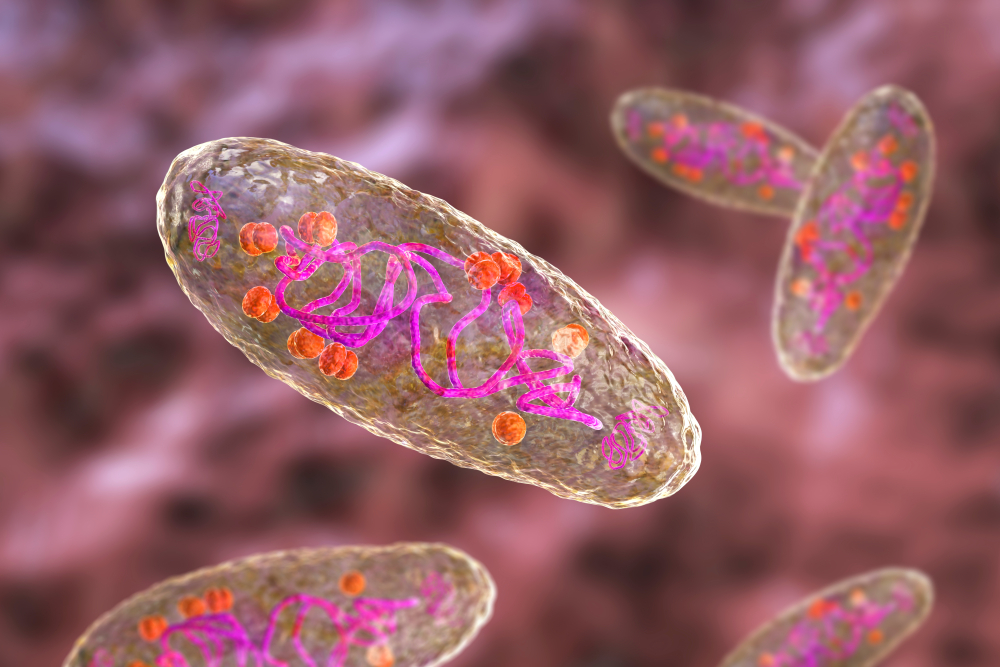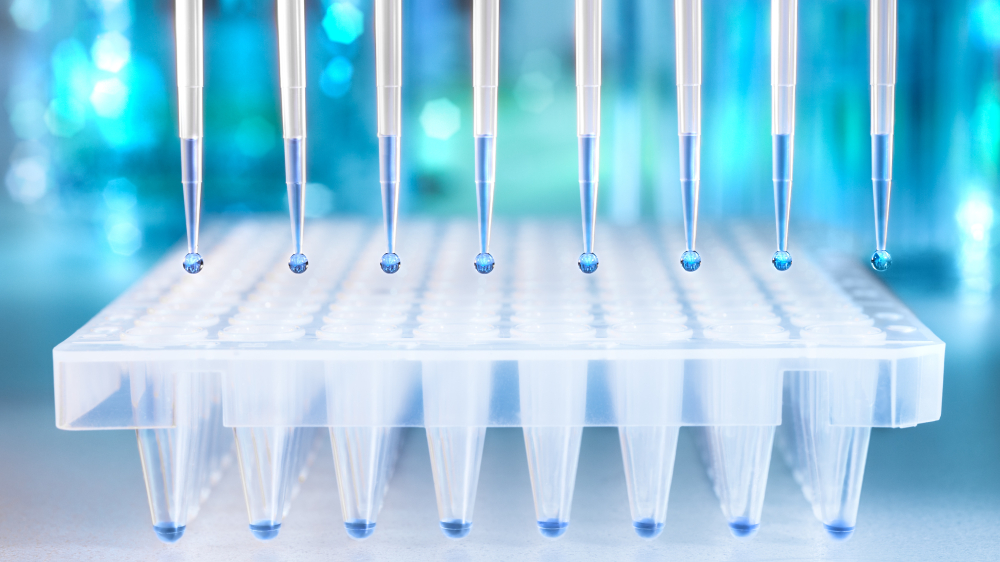What is a plasmid?
Table of contents
ShowA plasmid is a small, circular DNA fragment that has received considerable attention due to its capacity to transport and transmit genetic information among different organisms. Nevertheless, they are not only part of the genetic material in bacteria, but can also be used in biotechnology. For instance, plasmids can be genetically modified to function as blueprint for recombinant proteins designed for novel therapies.
From bacterial survival strategies to cutting-edge biopharmaceutical applications, plasmid DNA has had a significant impact on the landscape of molecular biology. In this article providing general information on plasmids, we will uncover the definition, historical significance, multifaceted functions, and remarkable possibilities of pDNA.
Plasmids – a definition
Plasmids are compact genetic structures that deviate from the standard chromosomal arrangement within prokaryotic cells, encapsulating a wealth of genetic diversity. These small, circular DNA molecules exhibit a unique extrachromosomal existence – with distinct DNA sequences composed of nucleotides, plasmids take over a variety of functions.
Plasmids can enable the exchange of genetic material between bacterial strains through mechanisms like horizontal gene transfer, contributing to the spread of crucial traits. Beyond resistance, plasmids host an array of genetic functions, from influencing gene expression to encoding vital cellular mechanisms.
One of their distinctive traits is the capacity for self-replication, driven by a designated origin of replication. This ability allows plasmids to proliferate independently, present not only in bacteria but also traversing the boundaries of eukaryotes like mammalian cells. Their adaptability has been harnessed in various genetic techniques, including cloning, where they serve as DNA or RNA vectors for the insertion of foreign genes.1

History of plasmids
The history of plasmids – respectively their discovery – dates back to the mid-20th century, when the enigmatic nature of these genetic entities piqued scientific curiosity, leading to a transformative understanding of their significance.
Initially, plasmids remained elusive due to technological limitations. However, scientific perseverance gradually unveiled the existence of these independent genetic fragments, challenging the conventional concepts of cellular genetics and providing explanations to antibiotic resistance and other genetic phenomena.
The revelation of bacterial plasmids as extrachromosomal elements initiated a paradigm shift in molecular biology and microbiology. Their unique genetic constitution, distinct from the main chromosomal DNA, reveals their dynamic function in genetic variation and adaptation.
Different types of plasmids
Plasmids display a remarkable diversity, with different plasmid types serving various genetic functions and contributing to evolutionary dynamics. It is worth noting that there are several ways of plasmid classification, such as by incompatibility group (only sufficiently distinctive plasmids can co-exist in a bacterial cell).
Among the different plasmid types, the differentiation between non-conjugative and conjugative plasmids holds a significant role. Conjugative plasmids possess genes that enable horizontal gene transfer between bacteria, facilitating the spread of advantageous traits across populations. They act as genetic messengers, contributing to microbial adaptability and evolution, while non-conjugative plasmids no not have this ability.
Among the specific types of plasmids, one can distinguish:
- F-Plasmids (fertility plasmids)
- Resistance plasmids
- Virulence plasmids
- Degradative plasmids
- Col plasmids (Colicinogenic plasmids)
Plasmids also encompass mobile genetic elements, contributing to genetic diversity through transposition events. These elements, which include transposons, can move within genomes, altering gene expression and influencing the genetic landscape.
Furthermore, plasmids have found utility as plasmid vectors in genetic engineering and biotechnology. These vectors serve as vehicles to transport foreign genes into host cells, enabling gene cloning, expression, and gene modification. Plasmid vectors have revolutionized fields such as biopharmaceuticals, allowing the production of therapeutic proteins and other valuable molecules.
The role of plasmids
Plasmids have diverse functions that transcend the boundaries of cellular genetics. These extrachromosomal entities are plasmid-encoded and carry genetic information that contributes to an array of vital processes.
One pivotal function lies in gene expression regulation. Plasmids often harbor genes that influence how other genes are transcribed and translated, modulating cellular functions. This regulatory capacity impacts both the host cell and its environment, making plasmids essential players in genetic editing.
Plasmids also serve as reservoirs for antibiotic resistance genes, which can be transmitted between bacteria. This function holds immense clinical significance, as it contributes to the alarming rise of antimicrobial resistance. By housing these genes, plasmids enable bacteria to withstand antibiotic treatments, posing challenges to medical interventions.
The concept of host-range refers to the possibility of plasmid DNA replication within various host species. Some plasmids exhibit a broad host-range, facilitating horizontal gene transfer between diverse organisms. This attribute bolsters genetic diversity and adaptation in ecological communities.
The multifunctionality of plasmids extends to the realm of biotechnology. Through genetic engineering, plasmids are manipulated to carry and express genes of interest, yielding valuable products like therapeutic proteins. Their utility as plasmid vectors has revolutionized biopharmaceuticals, enabling the synthesis of life-saving medications.
In essence, the functions of plasmids transcend mere genetic carriers. They actively shape genetic landscapes, influence survival strategies, and drive advancements across scientific and medical domains. The intricate interplay between plasmids and cellular mechanisms underscores the complexity of life's genetic intricacies.

Plasmids in bacterial cells
Bacterial cells like Escherichia coli (E. coli), Salmonella or Pseudomonas immensely rely on plasmids' diverse impacts:
- Antibiotic resistance: Plasmids harbor genes resisting antibiotics, propelling pathogen adaptation and impacting public health.
- Virulence: Plasmids wield virulence genes, bolstering bacteria's capacity to colonize hosts and evade immune responses.
- Horizontal gene transfer: Plasmids catalyze gene exchange, propagating advantageous traits – like antibiotic resistance – within microbial communities.
- Cell division: Plasmids guide genetic distribution in daughter cells, vital in maintaining genomic stability. <2
Plasmid DNA for biopharma applications
Plasmid DNA has had a significant impact on biopharmaceutical applications, paving the way for revolutionary in vitro possibilities. Its versatility has empowered genetic engineers and researchers to navigate new avenues of therapeutic progress.
7 of the most central applications for plasmid DNA in biopharma include:
- Genetic engineering: Plasmid DNA is a pivotal tool in genetic engineering, enabling the introduction of desired genes into host cells for various purposes (by the means of recombinant DNA technology), including research, production of therapeutic proteins, and modification of organisms.
- Recombinant protein production: Plasmids serve as vectors to express and produce proteins of interest, including enzymes, hormones, and antibodies, which have extensive applications in medicine, biotechnology, and research.
- Gene therapy: Plasmid DNA plays a critical role in gene therapy, allowing the delivery of corrective genes to treat genetic disorders, paving the way for potential cures rather than just symptomatic treatments.
- Vaccine development: Plasmid DNA-based vaccines offer a safer and more versatile approach, as they can stimulate an immune response without using live pathogens. These vaccines have shown promise in combating various infectious diseases.
- Biopharmaceutical production: Plasmid DNA serves as a key component in the production of biopharmaceuticals, allowing for the expression of therapeutic proteins, enzymes, and antibodies used in treating a wide range of diseases.
- Functional genomics and research: Plasmid DNA facilitates gene expression studies, allowing researchers to investigate the functions of specific genes, study regulatory elements, and explore molecular pathways.
- Synthetic biology: Plasmids are essential tools in synthetic biology, enabling the creation of synthetic DNA constructs for designing novel biological systems, pathways, and organisms with specific functions.
Overcoming challenges in plasmid DNA production
Plasmid DNA production is a complex endeavor, intricately weaving together scientific ingenuity and technological finesse. It commences by introducing the engineered plasmid into a host cell. Here, the plasmid's replicons come into play, initiating the plasmid replication process. A crucial element is the promoter, a genetic region that controls gene expression. Successful plasmid replication ensures the amplification of the desired DNA segments within the host cell.
However, pDNA manufacturing is not without its challenges. It is driven by considerations on process safety and cost efficiency, making it necessary to find technologies that pay tribute to these necessities.
To address these challenges, specialized devices and techniques are essential. This is where the concept of single-use technologies takes center stage. Traditional bioreactors and production systems often require extensive cleaning and validation processes, which can be time-consuming and costly. Single-use technologies, on the other hand, offer disposable components that eliminate the need for rigorous cleaning and cross-contamination concerns.
Single Use Support provides solutions for a controlled and sterile environment during fluid management, freezing, storing and shipping, preventing the risk of contamination that could compromise the production process. Additionally, devices for aliquotation and homogenization help streamlining the pDNA production process and achieve high-quality products.
FAQs
What is the significance of plasmid copy number in DNA production?
Plasmid copy number refers to the quantity of plasmids within a host cell. It impacts DNA production by influencing the abundance of desired genetic material. High copy numbers yield increased production, while low copy numbers demand careful optimization for successful outcomes.
How do restriction enzymes influence plasmid DNA production?
Restriction enzymes play a pivotal role in genetic engineering. They can be employed to cleave plasmids at specific sites, allowing for precise insertion of genetic material. This process is integral for generating recombinant plasmids with desired nucleic acid combinations for various applications.
What role does segregation play in plasmid maintenance?
Segregation ensures that plasmids are evenly distributed during cell division. Proper segregation is vital for maintaining plasmid integrity and stability within a cell population. Failure in segregation could lead to the loss of plasmids or uneven distribution among daughter cells.
- Plasmid, https://www.genome.gov/genetics-glossary/Plasmid, Published 2023
- Plasmid, https://biologydictionary.net/plasmid/, Published 2019








